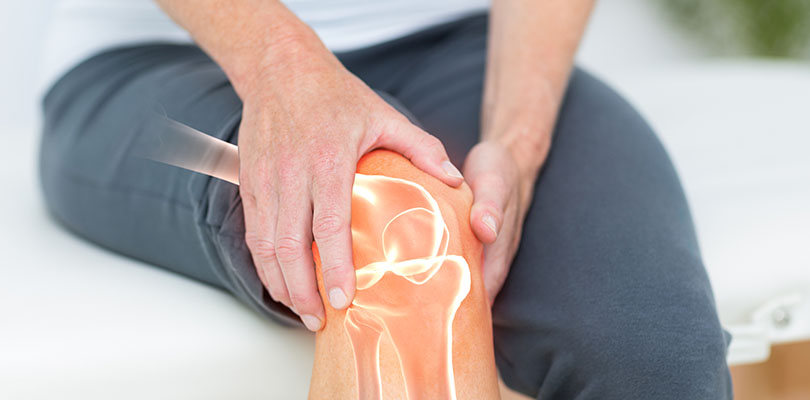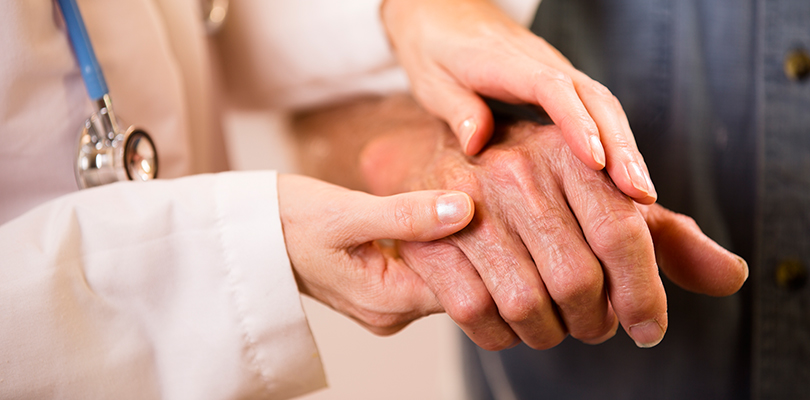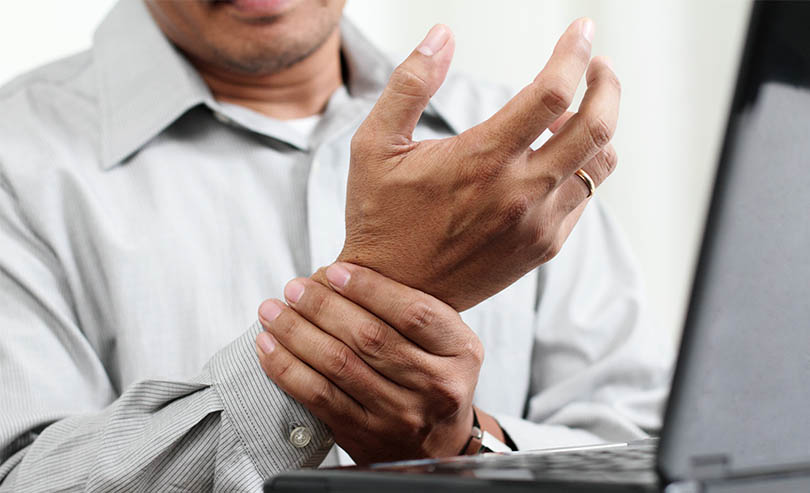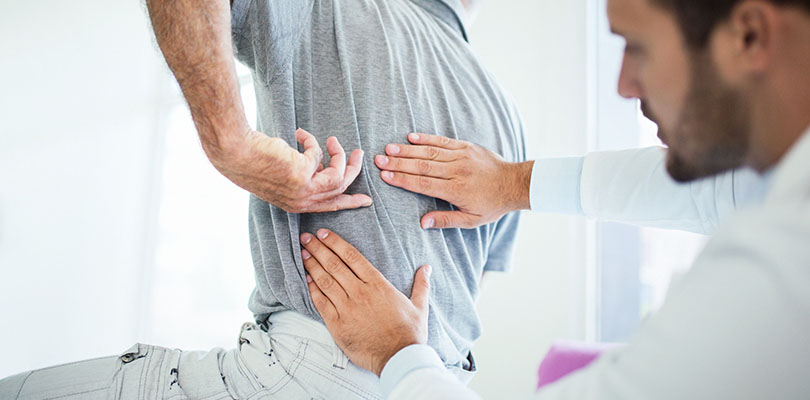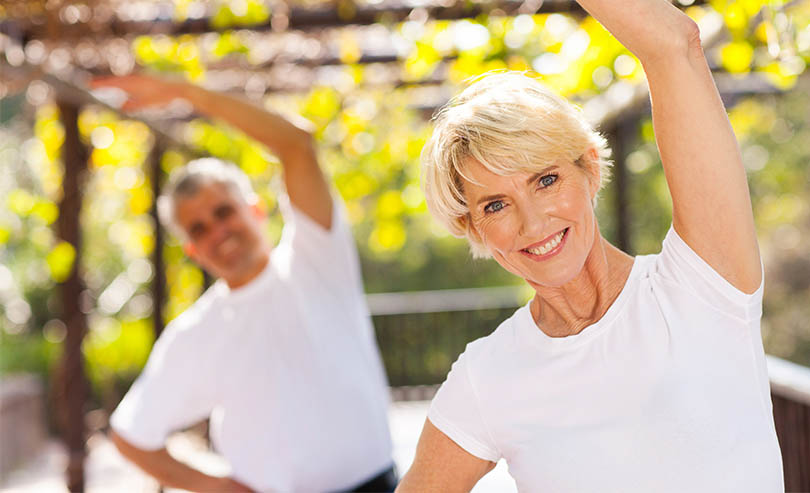Photo Credit: AndreyPopov / iStockPhoto.com
Beat the Pain, Stiffness and Fatigue With Some Tried and True Tips
If you find the promise of a new day is overshadowed by aches and pains, you’re certainly not alone. Morning stiffness is one of the most common complaints among arthritis patients, and since it can last for well over an hour, it can really interrupt your schedule and sideline your motivation.
Of course, stiffness isn’t the only annoyance you face when the sun comes up. Fatigue and pain can complicate your morning routine, too, so you need to take some time to address every challenge. It may sound like a big commitment, but in reality all you need is a half hour and a few simple techniques to start your day off wither more energy and less arthritis discomfort.
The Mechanisms Behind Morning Stiffness
It’s helpful to know what’s causing a problem in order to overcome it. When it comes to stiffness and arthritis in the morning — particularly in rheumatoid arthritis (RA) — the trouble begins when you settle your body down for the night.
Inflamed joints will lead to the telltale stiffness, and experts suspect that inflammation builds up most when your joints are at rest. After an eight-hour stretch without moving your joints, inflammation and stiffness is almost guaranteed.
Some other factors are known to make morning stiffness even worse, including:
- Excess body weight
- Sedentary lifestyle
- Poor sleeping posture
- Cold or damp rooms
So, what’s the best way to relieve the morning stiffness? First, revamp your waking routine to help yourself get a better sleep, which will allow your body recharge and repair during the night. Secondly, get active — after all, if immobility is to blame for your stiff joints, then activity should help to solve the problem.
Experts insist the more active you are in the morning, the more swiftly you can overcome your arthritis stiffness, and the more mobile you’ll be for the rest of the day. However, the type of activity you choose can make a big difference, so proceed with caution and patience.
Best Exercises to Loosen up Joints
Stretching is a universal way to stay loose and limber, but people with arthritis need to approach morning stretching a bit differently than others. In fact, stretching muscles is only part of the equation; sore and stiff joints call for some complementary exercises to treat the whole problem.
Range of Motion Exercises
As opposed to stretching, which aims to lengthen muscles, range of motion exercises focus on joint movement, improving flexibility, and maintaining movement right in the joint.
Rolling your joints is gentle and effective for better range of motion. Start by rolling your head from shoulder to shoulder a few times, then move down to your shoulders, rolling them forward and backward. Move onto the wrists, rotating your hands around in small circles. Help your body even more by doing these exercises before you go to bed, too.
Gentle Yoga Stretches: Yoga brings together strength, flexibility, and range of motion in a variety of poses. Some of the best postures for arthritis involve moving the body around itself: twisting gently from the base of your spine will compress and stretch muscles, and it’s thought to be detoxifying for the organs.
The best way to get into yoga for arthritis is to attend a class. It’s much easier to pick up and internalize the postures when an expert is guiding you through them, and you’ll learn how to keep good form, which is vital for safety and results. Soon you’ll be able to use the exercises whenever and wherever you need them.
Knee Bends or Squats: Strengthening movements are important for joint function, too. Once you’ve warmed up your muscles with a shower, take a few minutes to do some simple knee bends, which will exercise about 90 percent of your skeletal muscles.
Early onset arthritis is arthritis that occurs in young people. There are certain risk factors to avoid. Here's how to prevent early onset arthritis.
Holding on to the back of a chair (or nothing at all, if you’re feeling strong and balanced), squat slowly, bending at the knees and keeping your back as straight as possible. Stand up with the same controlled motion. Exhale as you go down, and inhale as you come up. A set of 10 or 12 squats should be enough to get your blood circulating.
Tips for Safe and Effective Exercising
When you wake up with arthritis pain, you probably don’t feel like leaping out of bed – and that’s perfectly alright. In fact, rushing through the process will sabotage your efforts. Instead, start small and work into more energetic movements as your body allows.
Stay in Bed
Be sure to start your stretching while you’re still in bed. Your bedding will keep your body warm while you ease into the movements, which can be very helpful; as soon as muscles and joints get cold, stiffness worsens and stretching is more difficult, and could even lead to injury. Starting your morning exercise right after you wake up is also a motivating way to start your day.
Focus on Full Range of Motion
For each individual stretch, you’ll want to move your joint through its entire circle or arc to encourage the tight muscles to loosen at every point around the joint. They key is to bring the joint around its full range of motion without causing pain or discomfort — pushing too far when there’s resistance can create new problems.
Slow Down and Be Patient
The faster you pull your joints, the more pain you’ll feel. Instead, ease into each and every stretch, allowing your muscles to gradually give way, and listening to your body to see whether you should stop there or push a bit further. It should take you several seconds to move into position, and each stretch should be held anywhere from 20 to 30 seconds – longer, if you feel the need.
Other Helpful Additions to Your Morning Routine
Fighting arthritis is a matter of preparation and commitment, and although the extra time and effort can be a bit of a chore, keeping your resources within arm’s reach will simplify things a lot. Here are a few smart habits to adopt for more comfortable mornings.
Medicate Wisely (and Early)
The best way to start your day with less pain is to take your medication right when you wake up — then go back to bed. Over-the-counter nonsteroidal anti-inflammatory drugs (NSAIDs) can be very helpful, but they do take some time to kick in.
Fix this timing issue by setting your alarm for an hour before you need to rise, take your pills, and drift back to sleep for a bit while they get to work. You’ll be in better shape when you wake up for good.
Medicated creams or ointments that bring down inflammation can also help kick-start your mornings. Make room on your nightstand for your pain pills, a glass of water, joint lotion, and an alarm clock. Energizing scents can take your wake-up routine to the next level: keep a jar of essential oil like lemon, peppermint or rosemary (diluted in water) within reach, and take a sniff for an instant boost.
Work in Some Cardio
Getting your heart pumping promotes circulation to deliver blood and heat to your muscles. You don’t have to hit the pavement for a pre-dawn run every day, but a bit of dynamic movement can help your joints loosen up faster.
Consider bringing a stationary bike into your bedroom, or investing in a small fitness trampoline to get some more aerobic exercise into your day. Keeping your workout equipment in your bedroom will remind you to use it in the mornings.
Sleep With Braces
Immobilizing your hands and wrists might seem counterproductive when you have arthritis, but there’s a very good reason to wear special splints while you sleep. Many people subconsciously move about during the night, and it’s not unusual to clench or tighten certain parts of your body without realizing it — especially the hands.
Braces can make it impossible to bunch your fingers into a fist, which will help to keep muscles and joints relaxed. And while sleeping with rigid hand and wrist braces may sound supremely uncomfortable, the contoured design and smooth fabric is easier to handle than you imagine.


